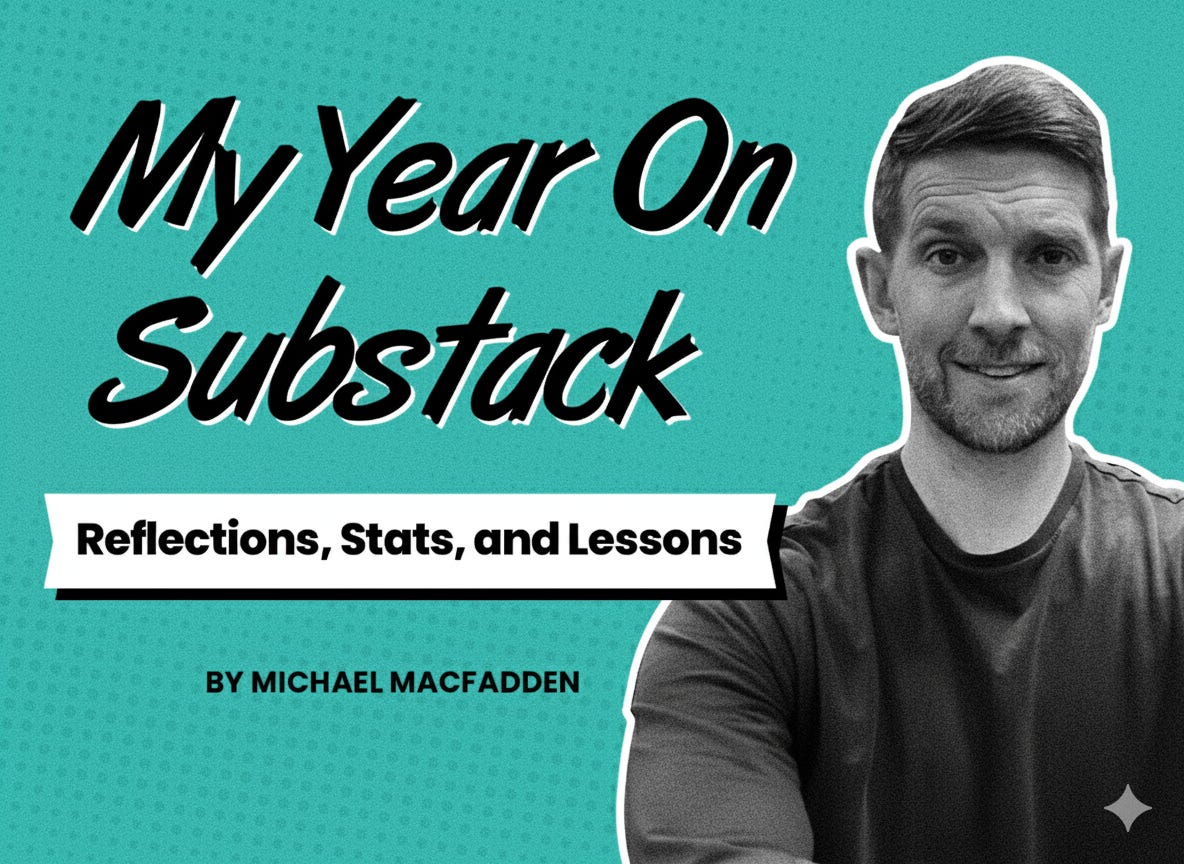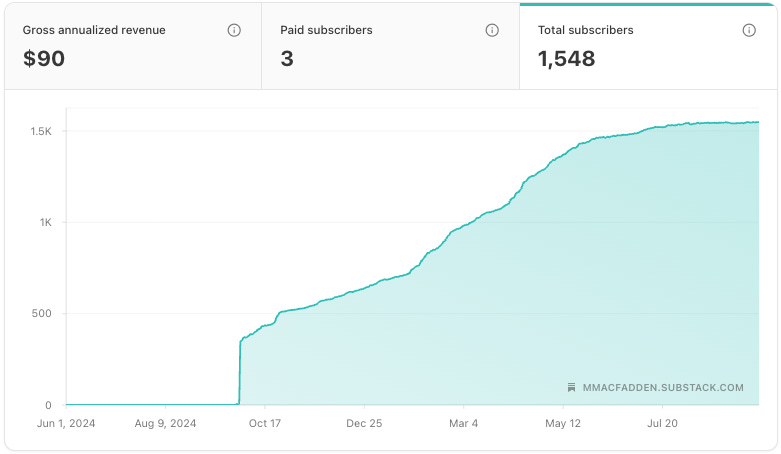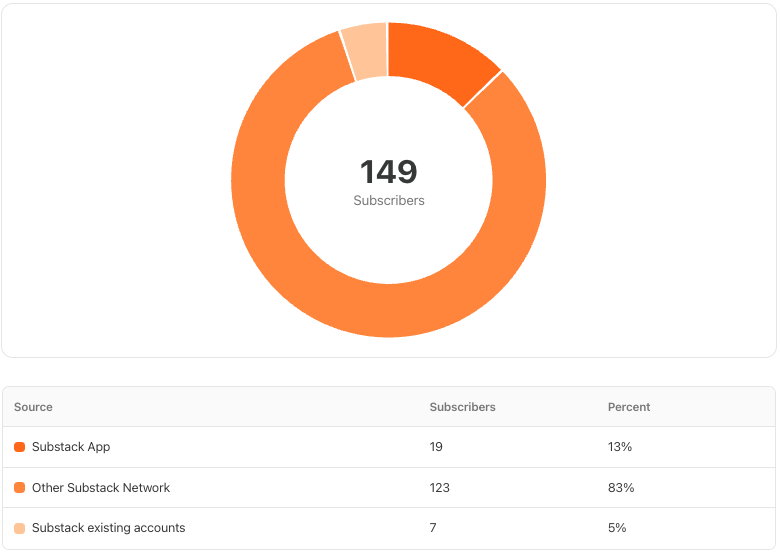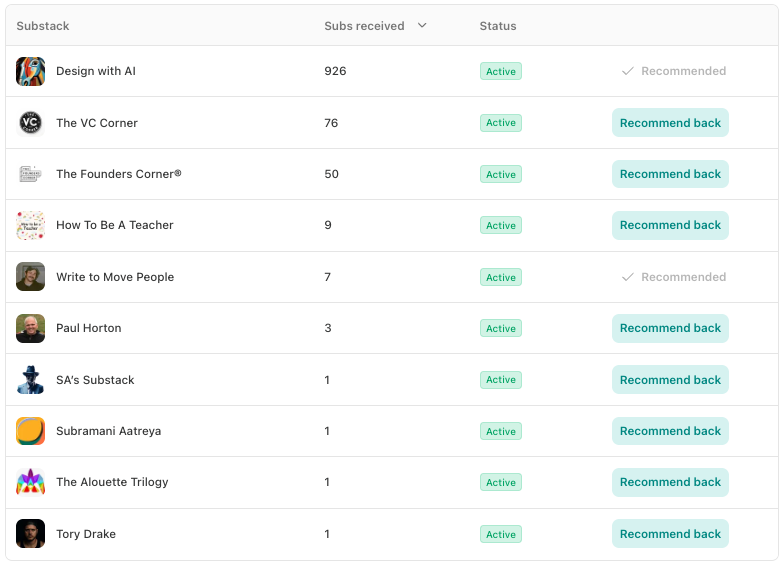What I've Learned After One Year on Substack
What I've learned publishing at least once a week on Substack for a full year.
Hey, Friends! Tomorrow, September 27th, marks my one-year anniversary on Substack. Here’s what I’ve learned from publishing at least once a week for a full year.
You Just Have To Start
One of the most important things I did over the past year was actually start publishing. For a long time, I entertained the idea of “becoming a writer.” I imagined what it might be like to enjoy a work schedule on my own terms. I pictured people praising the clever words I typed on my keyboard, and I daydreamed about the moment my work was optioned by Netflix.
Here’s what I didn’t do, though: write.
I fell into what I believe is a common trap for many would-be creatives. Doing everything in the world related to that creative thing except for the thing itself. About a year ago, though, I dusted off the Substack account I’d initialized a few months earlier, opened up the editor, wrote something, and sent it to the email list I’d built over the previous ten years but hadn’t really done anything with.
Was it any good? Not at all.
It was basically a poor imitation of Austin Kleon’s newsletter. It featured sloppy AI artwork, and of the 350 or so email addresses I sent it to, only a handful of recipients actually opened it. It certainly didn’t receive high praise, but it also didn’t receive much criticism. If I’m being honest, it was mostly just ignored, but I found that somewhat freeing.
I realized no matter how good your writing, building a following with a newsletter takes a long time. So it’s okay if it isn’t perfect right out of the gate. You can find your audience as you find your voice, but finding your voice is really only possible if you write.
I cringe at some of my earliest published works on Substack, but it was necessary for me to put them out to get to where I am today.
Takeaway: You can’t get better if you never start.
My Operating System
I’ve previously made several attempts at writing and publishing, but each time I lost steam and fizzled out. By shifting my thinking and reframing it in several key areas, I’ve built an operating system of sorts that has helped me show up consistently each week.
Below are several of the reframes that have helped shape my practice, which has allowed me to publish consistently:
I used to write only when I felt inspired to do so. Today, I write to become inspired.
I used to think I had to write for a big audience. Today, I write about what interests me and trust that like-minded people will eventually find it.
I used to think I had to write from a position of expertise. Today, my writing is more exploratory in nature. I don’t have all the answers, but there’s value in sharing what I’m learning.
I used to think my prose had to be perfect. Today, I know that typos will invariably slip through the cracks, and that’s okay.
I used to open my editor and hope I’d find something to write about. Today, I keep a running note of topics to explore that I add to passively, so I’m never out of things to write about.
I used to obsess over gimmicky growth strategies and top-of-funnel strategy. Today, I focus on consistency. I figure that ten years of showing up will outperform even the best click funnel.
I used to write in isolation. Today, I’ve befriended (at least online) an amazingly creative group of people who inspire me daily.
It’s unlikely that any of the above points by themselves are earth-shattering revelations, but I’ve come to realize that progress rarely comes in one fell swoop. It’s more the accumulation of habits, practices, and mental models that reduce friction and promote change.
Takeaway: Setting my environment to encourage the outcome I desire has greatly influenced my ability to realize that end.
My Statistics
So what does all of this add up to? Under the hood, Substack features a pretty robust dashboard of statistics for content creators. I’ve pretty intentionally ignored it so as not to waste time prematurely optimizing, but after a full year of writing, there are a few things that I think are worthy of exploration.
Where I started: I started building an email list nearly a decade ago when my Google Slides Templates for Teachers started ranking highly on Google. I didn’t really have a plan for the list, but I figured it could come in handy one day, and I felt doing nothing with that organic traffic would be a waste, so for years, I slowly built up a list of a few hundred subscribers.
Today, teachers mostly use Canva for their pretty slide decks, so that source of subscribers has pretty much dried up. I’m thankful for the jumpstart it offered me, though.
Over Time: The chart below shows that I initiated my Substack account in June of 2024, but I didn’t do anything with it until later that fall, hence the jump from 0 to 354 subscribers. For the 8 months or so following, I experienced a pretty steady growth of 100 to 200 new subscribers per month.
In May of this year, that leveled off with each new subscriber pretty much balancing out the trickle of unsubscribers leaving my newsletter.
Diving in a little deeper, I can see that some of my growth came from the Substack app itself—about 150 subscribers. Presumably, this is a product of the black box that is their recommendation algorithm.
So what has been the primary driver of growth? Recommendations. Other Substackers have the option to recommend my newsletter to their new subscribers. One newsletter in particular,
’s Design with AI, is responsible for the vast majority of my success. It’s safe to say that if Xinran’s newsletter hadn’t blown up in the last year, I wouldn’t be anywhere near where I am today.Unfortunately, there aren’t really any lessons to glean from my experience. Riding a much more successful Substack’s coattails isn’t exactly replicable, nor is executing a niche ten-year SEO strategy, but I suppose there is a broader lesson to be learned: taking more shots on goal increases your likelihood of scoring.
While you can’t copy what I did exactly, you can emulate the spirit of my activities: try a bunch of stuff, recognize opportunities when they present themselves, and make the best of every situation.
Other Stats: I don’t have much to say about these, but some might find them interesting:
For pretty much the entire year, my email open rate has hovered between 31% and 34%.
In recent months, most of my posts have received between 750 and 850 views.
My 3 paid subscribers are blood relatives. I don’t have a monetization strategy other than: if you love me, please send $30 annually.
Takeaway: Despite having access to all sorts of statistics, I remain convinced that producing quality content consistently is probably the best strategy to grow.
On Writing Fiction
In October of last year, I partook in an unexpected side quest and wrote my first piece of long-form fiction. I’ve been calling it a novella, but someone told me it was too short to be considered as such and is actually a novelette. Either way, it’s ten quick chapters, and I had a blast writing it.
It tells the real story of the fake family behind the real company Windsor Greeting—a website/business I built last year. It’s a tale of family drama that deals with matters of deceit, loss, succession, and reconciliation.
I discovered that writing fiction is very different from writing non-fiction, and it exercised a totally different part of my brain. The project turned into something that I’m actually quite proud of, and I’m starting to feel the itch to write the next story in the Windsor family saga.
The project also gave me an excuse to team up with
who critiqued three book cover concepts I created. Read it below if you haven’t yet:I serialized the entire story on substack. It’s available to read here. Later this fall, I plan to release it in paperback via Amazon, so stay tuned.
I should note that each time I published a new chapter, I lost a handful of subscribers, likely because of how different it was from what I normally write about. I don’t regret publishing it one bit, though. I believe the subscribers who stayed along for the ride are the true members of my tribe, and I’m glad to have them (you) by my side.
Takeaway: Writing fiction out of nowhere isn’t a great growth strategy for a newsletter, but it’s a hell of a lot of fun, and I’d recommend it.
Final Words
The truth is, I’m still figuring this whole newsletter thing out. It’s quite possible that the shape it takes will be different one year from today, and that’s probably okay. I set out to publish each week for a year, and today’s newsletter officially marks that goal as complete. Probably, though, if I want this writing thing to go anywhere, what I really need to do is write each week for ten years.
So I think that’s what I’m going to try to do.
In the meantime, it really helps when you like, comment, restack, or share my work with others. Please consider helping me continue to grow by doing one of the above.
See you next week!
-Mike








Congrats on one year! I'm impressed with how regular you are. Here's to another great year and new adventures!